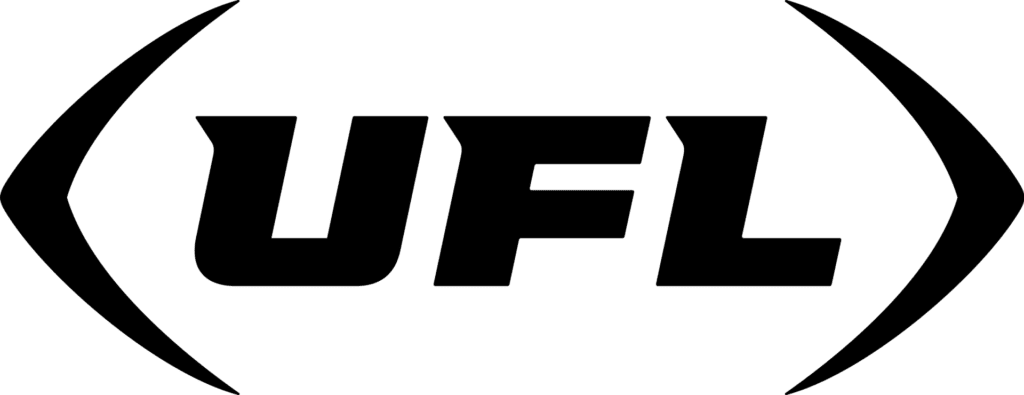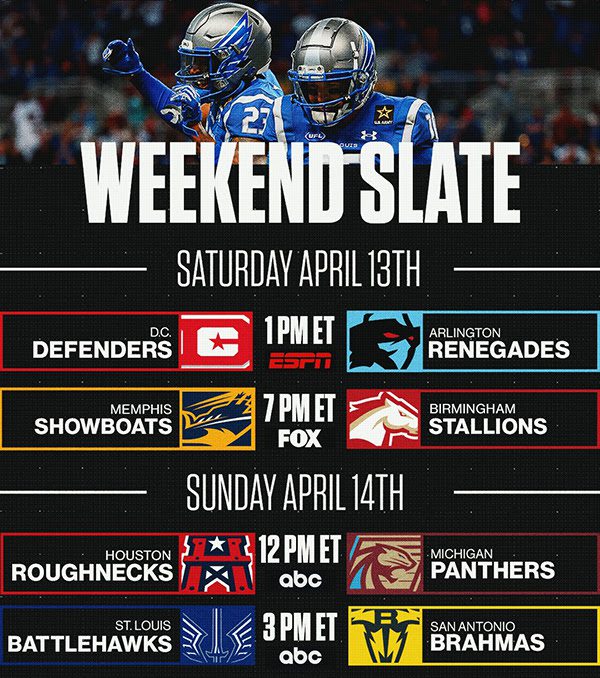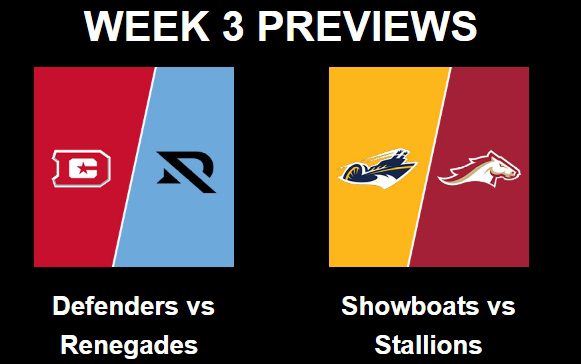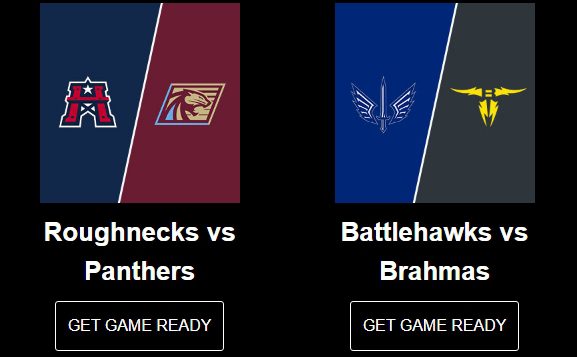By Lydia Jane Allison

|
STALLIONS LEAD THE CHARGE IN WEEK 3
Week 2 of the UFL saw St. Louis set a modern spring football attendance record with 40,317 packing The Dome at America’s Center, Panthers kicker Jake Bates nailing another impressive 60+ yard field goal, and the Brahmas pulling off a thrilling come-from-behind victory. The Stallions, the only team to play their first two games away, stand strong at 2-0 as they prepare for their home opener in Birmingham this Saturday night (7 PM ET on FOX). While both the Stallions and Brahmas aim to maintain their undefeated status, the Roughnecks and Renegades are determined to secure their inaugural UFL victories. |
|



FROM WIKIPEDIA COMMONS
The United Football League (UFL) is a professional American football high-level minor league which started play in March 2024. The league was created following the XFL–USFL merger of the latest incarnations of the XFL and United States Football League (USFL). It consists of eight teams, all of whom were members of the XFL or USFL prior to the UFL’s creation, concentrated in the Midwest and Southern United States.
TEAMS
Four teams came from the XFL and three came from the USFL, while both league’s Houston-based teams were merged, maintaining the branding of the XFL’s Roughnecks, and the divisional alignment, players rights and coaching staff of the USFL’s Gamblers. In essence the Gamblers changed their name to the Roughnecks.

2024 RULES
Mike Pereira and Dean Blandino are in charge of the UFL’s officiating and rules.
The league rulebook was released February 13, 2024. Though most of the UFL’s unique rules were common to both the USFL and XFL (such as allowing a second forward pass if the first does not cross the line of scrimmage, and the treatment of a fumble through the end zone the same as other forward fumbles in that it is brought back to the spot of the fumble), a limited number required compromise or were changed entirely from both leagues’ rules:
- The league will use the USFL’s kickoff rule, which resembles that used at most levels of the game but kicks off from the kicking team’s 20-yard line instead of the 35-yard line used at the college and NFL levels (as opposed to the XFL rule which kicked off from the 30-yard line but had the opposing teams line up 35 and 40 yards downfield from the kick respectively and required the kicker to land the kick within 20 yards of the end zone without going in). A rule proposal would replace the kickoff with a punt, thereby resembling the safety kick at other levels of the game, but this rule did not make it into the rule book.
- The onside conversion option will remain available, with a team trailing in the fourth quarter allowed to attempt a single scrimmage play to gain 12 yards from its own 28-yard line. (The XFL used 15 yards from its own 25-yard line; the USFL used 12 yards from its own 33-yard line.)
- Pass interference penalties will be limited to 15 yards from the previous line of scrimmage or the spot of the foul, whichever is less.
- The league will use the XFL’s variable-distance conversion rule, offering one, two or three points depending upon how far away from the goal line the offense chooses to attempt the play, and prohibiting kicking for the extra point. (The USFL had allowed the two and three point scrimmage conversions but allowed for an extra point kick.)
- All touchbacks will come to the receiving team’s 25-yard line. Any coffin corner punt that goes out of bounds beyond the 25-yard line will be treated as a touchback, a rule previously used in the XFL (though that league had used the 35-yard line for its touchbacks).
- The league will use the National Football League rule requiring a receiver to land both feet in bounds for a forward pass to be counted as complete. This was a change from both the XFL and USFL, along with most other professional leagues other than the NFL, that only required one foot in-bounds for a completed pass.
- The XFL overtime rule will be carried over, in that tie games will involve a best-of-three shootout of two-point conversion attempts from each 5-yard line. If the tie persists, multiple attempts will be played until one team scores, which wins it. One timeout can be called per attempt. The overtime has no game clock, but the play clock will still be used.
COURTESY UNITED FOOTBALL LEAGUE & WIKIPEDIA COMMONS
